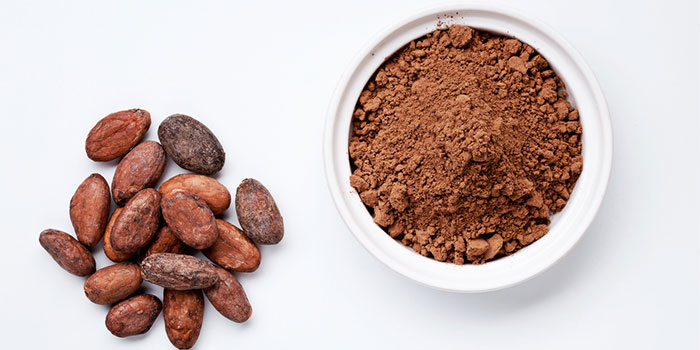
Pronounce it: kak-ow
Cacao, cocoa and chocolate are all produced from the seed pods of Theobroma cacao, a tree native to the tropics of Central and South America but now grown internationally, including in Africa and India.
Cacao in powder form, often also sold as raw cacao, is produced at a lower temperature than cocoa and chocolate. Like these it is made by pressing cacao beans to remove much or most of the cacao butter.
Cacao has an earthy, deep chocolate flavour with a degree of bitterness and will usually also be grittier than cocoa or chocolate, again because it is less processed. To be truly raw, cacao should be cold pressed from beans that have not been roasted; sometimes it is made from beans that have been lightly roasted at no more than 40C. Each difference in process will give a difference in flavour.
The effect of lesser processing is to present a product with greater anti-oxidant content and other claimed health-giving benefits including mood enhancement but, of course, the occasional hot drink is not going to contribute much other than enjoyment of the flavour.
Availability
Available increasingly and in different forms online, in supermarkets and specialty food shops, particularly those selling organics.
Choose the best
Check the label to ensure minimal processing and that there are no unwanted additional ingredients like sugar.
Store it
Cacao has a long life, if kept cool and dry.
Cook it
Use as you would cocoa powder, but expect it to be more difficult to dissolve as a hot drink.
Cacao nibs are different because they are unprocessed pieces of the cacoa bean, and thus also contain all the cacao/cocoa butter. This added richness makes them widely acceptable as a snack, perhaps mixed with nuts, and as a surprising burst of flavour in chocolate baking, sauces and icings – even ice creams.
Be the first to comment on "Cacao"